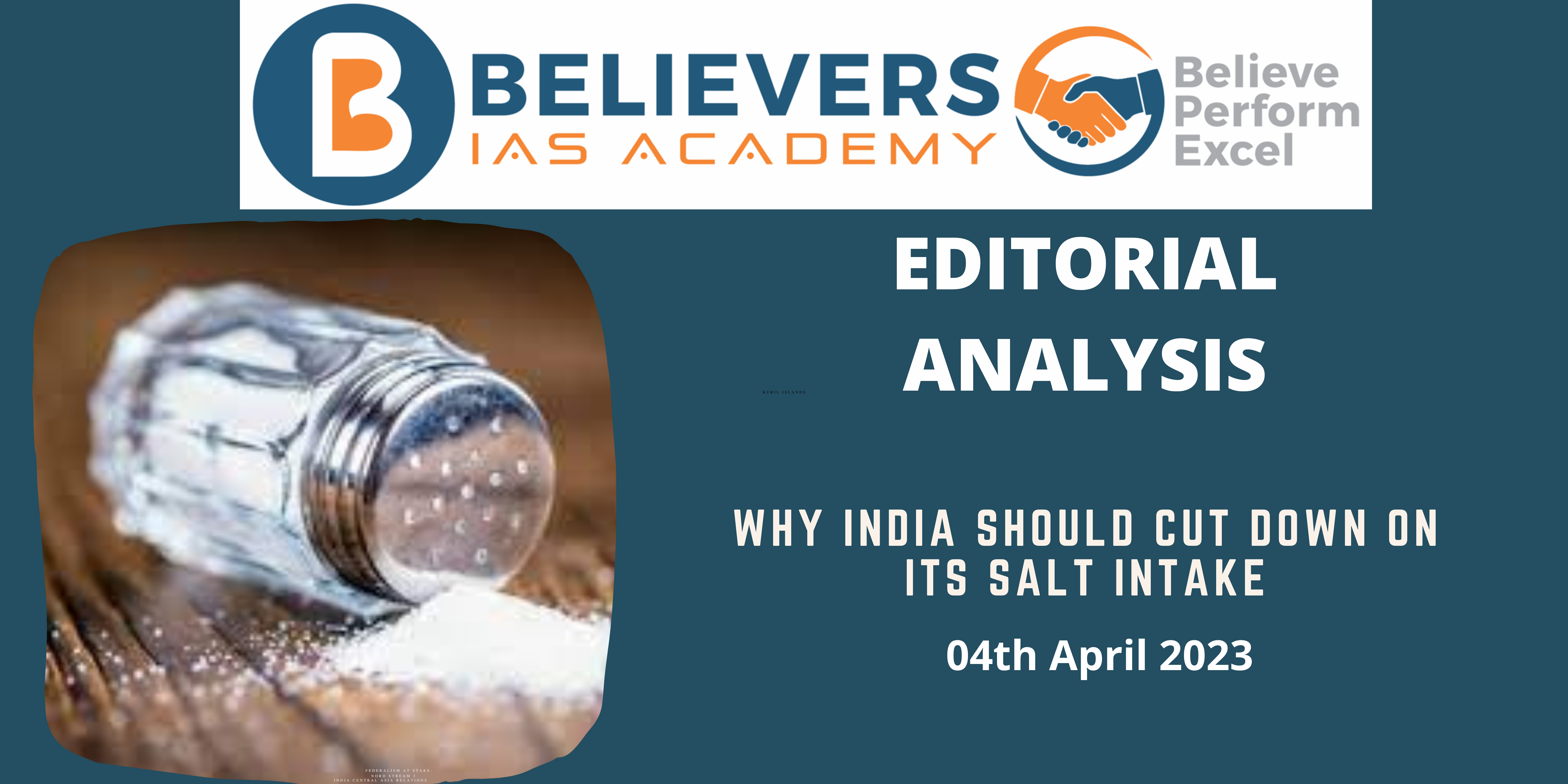Why India should cut down on its salt intake
Points to Ponder:
- Consuming too much salt puts Indians’ health at risk for hypertension, heart disease, and stroke.
- The average sodium intake in India is higher than the physiological requirement and surpasses the WHO’s recommendation of 5 g of salt per day for people.
- According to empirical data, lesser sodium consumption is strongly correlated with lower blood pressure, which lowers the risk of cardiovascular disease.
- A major risk factor for cardiovascular illness, the leading cause of death globally, is high blood pressure.
- The staggering economic toll that cardiovascular disease takes on low- and middle-income nations, including India, highlights the pressing need for efficient treatments to lessen the illness’s effects on both the economy and public health.
- The “Eat Right India” movement and the “Aaj Se Thoda Kam” social media campaign are just two of the volunteer programs the Union government has launched to encourage Indians to consume less salt.
- Collaboration between State and Union administrations is essential in this respect because hypertension brought on by excessive sodium consumption requires a complete national plan.
- Here are some extra actions that can be done to address the problem of excessive sodium intake:
- Mandatory salt reduction goals: To guarantee that processed and packaged goods contain less sodium, India needs to enact mandated salt reduction goals for the food business. This would contribute to a decrease in the population’s total salt intake.
- Public awareness campaigns: To inform the public about the risks of consuming too much salt and how to do so, India needs to start public awareness campaigns. The intended audience for these ads should come from all socioeconomic backgrounds, both urban and rural.
- Indians need to be encouraged to eat more fresh produce, whole grains, and lean proteins, among other healthy dietary options. This would aid in lowering the intake of packaged and prepared meals, which frequently have high sodium content.
- Foods with a high salt content should be labeled to aid customers in making educated decisions. This would make it easier for customers to avoid foods that are rich in sodium.
- In conclusion, increased sodium consumption is a significant health issue in India that requires immediate attention. To decrease sodium consumption and avoid the financial and medical effects of cardiovascular disease, a multi-pronged strategy involving the government, businesses, and consumers is imperative.




